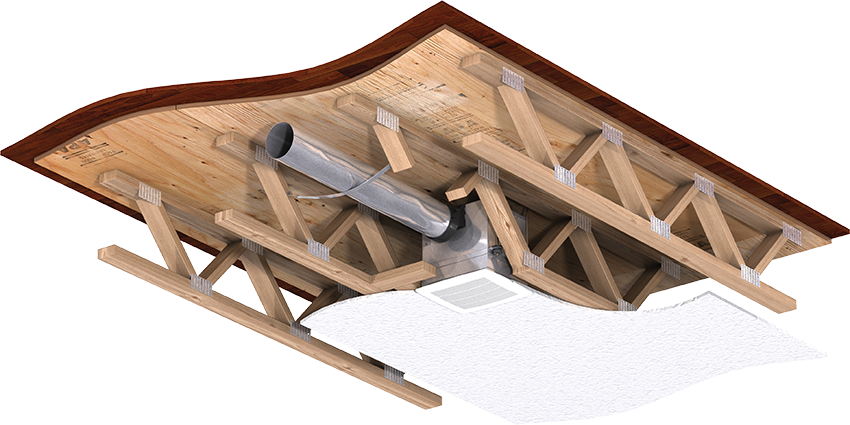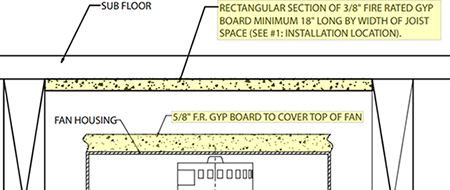Exploring the Benefits of Factory-Installed Ceiling Radiation Damper—Bath Exhaust Fan Combination

Best Practices to Specify
If a bath fan requires a ceiling radiation damper based on building type and location, the specifying engineer has a few options. The engineer may call out the desired manufacturer and UL Design Number, or just the UL Design Number. It is critical that the specifying engineer understand this process so that they do not inadvertently limit the number of manufacturers who can be used. For example, many specific UL Design numbers are proprietary to the manufacturer that sponsored the test set up. These not only are proprietary, but each design is usually exclusive to a given manufacturer. The specifying engineer has more flexibility to consider specifying multiple floor/ceiling design numbers or to specify designs that are open (not exclusive to a single manufacturer). This approach allows bids from multiple manufacturers. Open design numbers would allow any manufacturer that meets UL 263 to be eligible.
Fastening—the Benefits of Factory-Installed
If using ceiling radiation dampers that are shipped loose from the fan and require assembly on site, it is important to review the specific requirements for the fastener type and quantity per each of the four sides before installation. Since most bath fan manufacturers only offer ship-loose CRDs, the potential for damage, loss or improper attachment exists. The best way to prevent any issues related to this is by selecting bath fans with factory-installed CRDs. A factory-mounted CRD will save time in the field. Let us assume it takes approximately 5-10 minutes to install a CRD to a bath fan when assembling on-site. Now, let’s consider the labor savings on a 500-unit multi-family structure. Choosing a bath fan with factory mounted CRD could potentially save thousands of dollars in field labor.
Not All Installations are Created Equal
The next items to evaluate are the installation steps required for a specific fan and CRD. Review each bath fan manufacturers’ specific installation requirements to ensure compliance with any processes in addition to standard compliance. For example, installation instructions for most manufacturers require the installation of an additional damper mounting frame. However, some manufacturers also have additional requirements such as a contractor-provided section of drywall installed on top of the fan housing and beneath the subfloor (Figure 1). This last step will add extra time and cost during installation.
 |
| Figure 1 – Some manufacturers require an additional piece of drywall be used to cover the top of the fan. |
The fan and CRD assembly will not meet the certification requirements if the installer does not follow the stated installation steps. An inspection may reveal that the fan and CRDs may need to be removed and replaced if installed improperly. This scenario will add significantly more cost and labor time to the project.
A proper understanding of the purpose of a CRD, a proper specification, and a review of the installation requirements will help make the entire process much easier for the engineer and building contractor.
Learn more about ceiling radiation dampers and ceiling exhaust fans that come installed from the factory to save time and cost.
Ceiling Exhaust Fans Dampers

from